What is the Relationship between Education and Society?
| ✓ Paper Type: Free Assignment | ✓ Study Level: University / Undergraduate |
| ✓ Wordcount: 2343 words | ✓ Published: 24 Apr 2019 |
Education
impacts society, and in turn, society impacts education. This essay will be
highlighting how a meritocratic educational system affects how society views
education. The countries that will be focused on are Singapore and Japan.
According to Biesta (2009), education has three functions: qualification, subjectification, and socialisation. The meritocratic educational system in both countries focuses on qualification, but in Singapore there is a bigger emphasis on subjectification than socialisation whereas in Japan, it is the opposite. There are much more similarities to educational system in both countries than there are differences. Three of these similarities will be further elaborated on, which are: standardised testing, school-related suicides, and private supplementary tuition.
In
Singapore, the main objective of education is nation-building, with major
contributions in the economic sector as well as creating a strong Singaporean
identity. As it is a small country with no natural resources, its major asset
is human capital. Through education, the society changed from being low-skilled
to a high-skilled economy so as to attract companies to set up in Singapore as
its education system was able to produce workers at all technical levels (OECD, 2011). This, therefore, highlights the biggest link
between education and the society in Singapore. If education quality is low,
the people become low-wage, low-skilled workers. However, if education quality
is high, the people in turn become high-skilled, higher-income workers.
Similarly, Japan has a high dependency on its human capital. This is due to the lack of natural resources in the country caused by a “challenging environment” (OECD, 2011, p.138). In order to survive, they had to rely on each other and thus resulted in a society that places great value in social relations as well as education and skills. Nine years of education became compulsory after the World War II and everyone who graduated high school could get a chance to take the college entrance examinations. In the Japanese culture, individuals belong to a group and it is highly important to them to not let this group down. Therefore, getting a good educational performance is vital to the Japanese people as it is deeply rooted in them to do as well as possible and always work towards higher goals in order to be accepted and to gain status in the group.
Academic qualification is one of the main driving
factors of competition among students in schools. In both Singapore and Japan
where they are meritocratic systems, this creates the importance of doing well
and being one of the best. Having good grades means that any school is
accessible and would thus lead to more opportunities in careers ahead.
Particularly in Singapore, the more prestigious a school they get into, the
higher the pay in future jobs. Parents hold this in high regard and place high
expectations on their child to do well in school. This creates a culture where
parents deem that education in schools are not enough and send their child to
extra classes after school to improve their child’s grade. As long as they are
not scoring 100% on their tests, this means that there is room for improvement
in their scores. However, this contributes to a high level of stress among
students.
The usage of standardised testing is similar in both
countries. Japan has been using the system of having standardised tests at the
end every distinct level of education i.e. elementary school, middle school and
high school. The students’ results in these entrance exams determines which
school they can go into. In urban areas, private schools are more prestigious
than public schools and entry to these schools means that the student is on an
accelerated path to the affiliate private schools, which could help them go
straight into the affiliated private university in the future. Entry to these
private schools requires passing the entrance exam. On the other hand, in rural
areas, public schools are more prestigious than private ones and entry to
public schools are based on the student’s grade point average.
As said before, it is similar in Singapore. At the end
of every distinct level of education i.e. primary, secondary and junior
college, all students of the level take the same paper based on the subjects
they are taking and the results of the exam determines their future school. From
secondary level onwards, students are able to choose a school regardless of the
distance from their home – if they are able to achieve the minimum entry
requirement, that is. As Singapore is a small country, students who do well in
the exams have a larger repository of schools in the next education level to
choose from – they can choose any school in the entire country, or even foreign
schools who have set up a campus in the country. However, in recent times, the
Singapore government has taken measures to try and reduce the competition
between students by removing the T-score, which compares the student with their
peers, in the Primary School Leaving Examination – the first major exam in
Singapore (Davie, 2016).
While Singapore is the top scorer on all the Programme
for International Assessment (PISA) tests in 2015, the students are also
experiencing high levels of stress due to this expectation of doing well
academically (Davie, 2017). There have been criticisms of the Singaporean
academic system that it is too stressful and too competitive. This is cemented
by the fact that there has been a rise in the number of suicides of 10-19 year
olds, from 13 in 2014 to 27 in 2015 (Wang, 2016). In 2016, there was a
case of suicide by an 11-year-old who fell to his death because he had failed
his mid-year examinations for the first time (Hussain, 2016). In that
case, the mother would lightly cane the boy on the palm for every mark he had
gotten under her standard of 70%. This boy’s case is not isolated and while there
are many personal stories documenting this race towards perfection, there are
almost little to no academic papers that have been written about this in
Singapore.
As for Japan, they ranked second in Science, eighth
for Reading and fifth for Math in the PISA tests in 2015. Although they fared
lower in terms of academic achievement on the international test, the levels of
stress in the students are quite high. Because of a need to be part of the
group, students are expected to get high scores. The suicide rates among youths
in Japan are much higher than in Singapore. In 2016, 320 under 18s committed
suicide and the rate has been in the range of 300 to 350 every year since 2007.
(Lim, 2017). The number of suicides spike when schools reopen after summer and
spring breaks – especially on September 1, after the summer holidays
(Matsubayashi et al, 2017). While there has been no root cause pinpointed to
the high number of suicides, the research by Denda et al. (2006) shows that 1
in 12 elementary students and 1 in 4 junior high students suffer from clinical
depression.
Despite the high levels of depression among the
students, there is still a cramming school – otherwise known as juku – culture
in Japan. Cramming schools in Japan can be traced back to the 1970s and is now
a staple in the nation. In the urban areas, at least 90% of the students attend
private tutoring (Bray, 2006). Students attend the juku for differing reasons:
to not get left behind, to keep up with the pace in the class as well as to
help with the preparation of the high school and university entrance exams
(Bossy, 1996). The average cost of sending a child who attends a public junior
high school to a juku is ¥471,000 (~£3155) a year whereas for a child who
attends a private junior high school, it is ¥1,269,000 a year (~£8511) (Brasor and Tsubuku, 2011). Juku is so ingrained in local culture that many
local governments provide monetary aid as much as ¥150,000 (~£1005)
a year to lower income families so that they can pay for them. This stems from
the idea that these subsidiaries needed to help the student break out of the
cycle of poverty. In 2010, the total amount that was paid to jukus was ¥371
billion (~£2.64
billion). This shows how important juku is
to the society.
As for Singapore, there has been a growing culture of
sending the children to after-school tuition classes. Compared to SG$650
million (~£363 million) spent by households in 2004, Singaporeans
spent over SG$1 billion (~£558 million) on tuition in 2014 (Yang,
2016). Tuition classes are not only for primary and secondary school
students (who spend three hours in tuition classes per week on average), but
also extend to pre-school children who, on average, spend two hours in tuition
classes a week. A survey of 500 parents was conducted by The Straits Times newspaper
and research company Nexus Link and they found that 7 out of 10 parents polled
send their children to tuition class (Davie, 2015a). When asked why, they said
it so that their child is not left behind in terms of education, and also to
help their child get a better grade in their subjects, which is similar to the
reasons for the Japanese students. Despite this, however, only one third of the
parents acknowledged that the extra tuition was helping their child improve
their grade (Davie, 2015b).
If seen from a different perspective i.e. education,
this culture of sending children to cramming schools – whether in Singapore or
in Japan – makes it seem like the amount of work that the children put in for school
is inadequate and thus needs to be added on with extra classes. It gives the
impression that what the teacher does in the class is not enough for the child
to prepare for examinations. In Singapore, primary school education is free
while secondary school education is SG$5 (~£2.79)
per month whereas in Japan, both elementary and middle schools are free. (The
Japan School System/School Fees, n.d.; Toh, 2015). Yet, many parents still
choose to take more money out of their pocket for their child to go for extra
classes just to get a better grade.
Because of the meritocratic educational system in
Singapore and Japan, the students in both countries strive to be the best.
However, as shown above, the root cause for this is different in each country
due to their differing cultures. Students in Singapore aim to be the best so
that they can go to a good school and eventually to a good university so that
they can have a better job as well as a higher pay. On the other hand, Japanese
students aim to do well in order to gain social status (and thus, higher pay)
and not let down the people in their group. In conclusion, society views
education as such an important stepping stone in life that they are willing to
fork out extra money for their children to do as well as, or even better, than
the other children surrounding them, whether it be for raising status in
society or for getting a higher pay in jobs. Parental expectations for their
children to do well in standardised testing leads to higher enrolment in
private supplementary classes and thus adds pressure onto the students to do
well in education which can, unfortunately, lead to suicide.
References
Biesta, G. (2008) Good education in an age of
measurement: on the need to reconnect with the question of purpose in
education. Educational Assessment, Evaluation and Accountability, 21(1),
pp. 33-46.
Bossy, S. (1996) Academic pressure and impact on Japanese
students. [Online]. 1996. Digitool.library.mcgill.ca. Available at:
http://digitool.library.mcgill.ca/R/?func=dbin-jump-full&object_id=35314&local_base=GEN01-MCG02.
(Accessed: 16 November 2017).
Brasor, P. and Tsubuku, M. (2011) In Japan, you get the
education you (the consumer) pay for. [Online]. 2011. The Japan Times.
Available at:
https://www.japantimes.co.jp/news/2011/09/22/business/in-japan-you-get-the-education-you-the-consumer-pay-for/#.Wg4TPlt-qoQ.
(Accessed: 16 November 2017).
Bray, M. (2006) Private supplementary tutoring: comparative perspectives
on patterns and implications. Compare: A Journal of Comparative and
International Education, 36(4), pp. 515-530.
Davie, S. (2017) Singapore students suffer from high levels of
anxiety: Study. [Online]. 2017. The Straits Times. Available at:
http://www.straitstimes.com/singapore/education/spore-students-suffer-from-high-levels-of-anxiety-study.
(Accessed: 16 November 2017).
Davie, S. (2016) Will new PSLE scoring system reduce stress and
competition among pupils and parents?. [Online]. 2016. The Straits Times.
Available at:
http://www.straitstimes.com/singapore/education/will-new-psle-scoring-system-reduce-stress-and-competition-among-pupils-and.
(Accessed: 16 November 2017).
Davie, S. (2015) 7 in 10 parents send their children for
tuition: ST poll. [Online]. 2015. The Straits Times. Available at:
http://www.straitstimes.com/singapore/education/7-in-10-parents-send-their-children-for-tuition-st-poll.
(Accessed: 16 November 2017).
Davie, S. (2015) Tuition has become an educational arms race.
[Online]. 2015. The Straits Times. Available at:
http://www.straitstimes.com/opinion/tuition-has-become-an-educational-arms-race.
(Accessed: 16 November 2017).
Denda, K., Kako, Y., Kitagawa, N., and Koyama, T. (2006) Assessment of
Depressive Symptoms in Japanese School Children and Adolescents Using the
Birleson Depression Self-Rating Scale. The International Journal of
Psychiatry in Medicine, 36(2), pp. 231-241.
Hussain, A. (2016) Death of boy, 11, who fell 17 floors after
failing his exams for the first time ruled a suicide. [Online]. 2016. The
Straits Times. Available at:
http://www.straitstimes.com/singapore/courts-crime/death-of-boy-11-who-fell-17-floors-after-failing-his-exams-for-the-first-time.
(Accessed: 16 November 2017).
Lim, M. (2017) Bullying keeps youth suicides high in Japan.
[Online]. 2017. Stuff. Available at:
http://www.stuff.co.nz/world/asia/91911106/bullying-keeps-youth-suicides-high-in-japan.
(Accessed: 16 November 2017).
Matsubayashi, T., Ueda, M., and Yoshikawa, K. (2016) School and
seasonality in youth suicide: evidence from Japan. Journal of
Epidemiology and Community Health, [Online]. 70(11), pp. 1122-1127.
Available at: http://jech.bmj.com/content/70/11/1122.
OECD (2011) Lessons from PISA for the United States. Strong
Performers and Successful Reformers in Education, Available at:
https://www.oecd.org/pisa/46623978.pdf. (Accessed: 16 November 2017).
The Japan School System/School Fees (n.d.) [Online]. Available at: http://www.pref.osaka.lg.jp/jidoseitoshien/shugaku/g_english/shu_2_14.html.
(Accessed: 16 November 2017).
Toh, E. (2015) School fees for PRs and foreigners to increase
from 2016. [Online]. 2015. TODAYonline. Available at:
http://www.todayonline.com/daily-focus/education/moe-raise-school-fees-non-singaporeans-2016.
(Accessed: 16 November 2017).
Wang, T. (2016) Teen suicides highest in 15 years but overall
rate falls: SOS. [Online]. 2016. The Straits Times. Available at:
http://www.straitstimes.com/singapore/teen-suicides-highest-in-15-years-but-overall-rate-falls.
(Accessed: 16 November 2017).
Yang, C. (2016) Tuition race hots up as big players up their
game. [Online]. 2016. The Straits Times. Available at:
http://www.straitstimes.com/singapore/education/tuition-race-hots-up-as-big-players-up-their-game.
(Accessed: 16 November 2017).
Cite This Work
To export a reference to this article please select a referencing stye below:
Related Services
View allDMCA / Removal Request
If you are the original writer of this assignment and no longer wish to have your work published on UKEssays.com then please click the following link to email our support team:
Request essay removal


